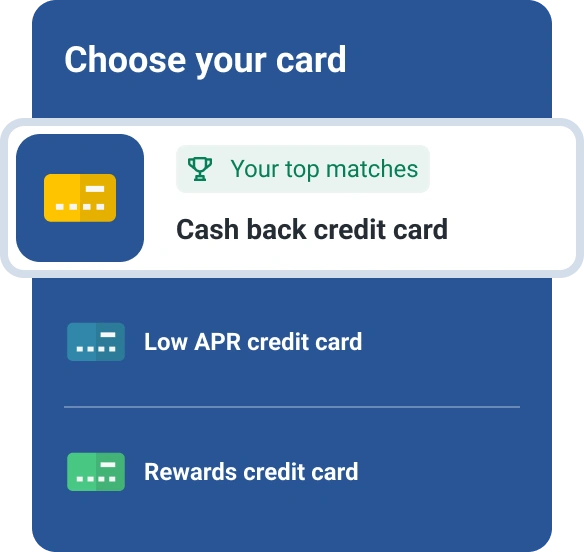What Is Credit Card Return Protection?
Quick Answer
Credit card return protection is a card benefit that allows you to get a refund on items the merchant won't take back, but be aware of the limitations and exceptions that apply.

Most consumers experience buyer's remorse at one point or another, but what do you do when the retailer's 30-day return window expires? What's your recourse if you purchased an item from a business that doesn't allow returns? In such cases, you may be in luck if you made the purchase with a credit card that offers return protection.
Credit card return protection is a perk that can help you get reimbursed when the retailer won't give you your money back. Not all card issuers provide this valuable benefit, so it's worth checking your card's benefits guide to see what type of return protection you have, especially if you're planning on making a major purchase soon.
What Is Return Protection?
Return protection is a consumer benefit some credit cards provide that can extend the return period or allow you to receive a refund even when the retailer doesn't issue them. Generally, you must charge the entire purchase to a credit card that offers the return protection to qualify for the benefit. If eligible, you could receive a check or statement credit from your card issuer for the full purchase amount.
As you might expect, this coverage comes with some limitations on the time frame for submitting a claim and the maximum reimbursement amount. Typically, you must notify your credit card issuer within 60 to 90 days of purchase to request reimbursement. Many issuers cap refund amounts per item and up to a certain maximum refund amount per year. For instance, a card issuer may allow a 90-day window for reimbursement claims and set their maximum return amounts at $300 per item and $1,000 per calendar year.
Unfortunately, credit card return protection is a perk that's becoming increasingly rare. In recent years, several card issuers removed the benefit from most or all of their cards. The benefit is primarily available with preferred credit cards that typically come with high annual fees.
How to Use Return Protection
Check your card's guide to benefits or speak with a customer representative to ensure your card offers return protection. Even if it does, keep the following guidelines in mind when using return protection to reimburse any unwanted purchases.
- Check with the merchant. Talk to the retailer to see if they'll accept your return. This correspondence may be best handled through email so you have a written account to show your credit card issuer.
- Collect your evidence. Before submitting a claim, make sure you have your original purchase receipt, a credit card statement listing the charge and any other supporting documents to support your claim.
- Contact your credit card issuer. Submit your reimbursement claim to your card issuer within the timeline set in their terms, usually 60 to 90 days. The credit card company will likely send you shipping labels you can use to mail your item to the benefits administrator, who will ensure the item qualifies for a refund. Some card issuers may require you to pay for shipping.
If your return meets the terms of your credit card's protection program, you should receive a refund check or statement credit for your returned item. Keep your shipping receipt for backup just in case the issuer doesn't receive the item.
Common Return Protection Exceptions
Not all purchases are eligible for return protection policies. For example, coverage may be limited to purchases made in the United States or U.S. territories.
Limitations and exceptions vary by the card issuer, but here's a general list of common exclusions you may encounter:
- Animals and plants
- Antiques, art and collectibles
- Books and magazines
- Cash, credit or debit cards and traveler's checks
- Computer programs, operating software and other software
- Damaged and non-working items
- Event tickets
- Firearms
- Items purchased for resale, rental, professional or commercial use
- Items purchased in a foreign country
- Items with a limited lifespan
- Medical equipment
- Motorized vehicles, including cars, boats and aircraft
- Perishable and consumable goods
- Recordings, including video and audio tapes and discs
- Real estate, land and buildings
Many cardholders don't understand all the benefits their credit card offers to get the most out of it. But taking some time to review your benefits guide can help you understand how your card's return protection program works and what items it doesn't cover, which is important to understand. For example, you might decide against a pricey purchase if neither the merchant nor your credit card will reimburse you if you're unhappy with the item.
Check Your Credit Before Applying for a New Card
Credit card return protection is just one of the many consumer protections and other perks your credit card might offer. If it's not included, or if you're missing other key benefits, you may want to consider getting a new card that better suits your needs.
Since credit card return protection is primarily offered through preferred credit cards, you may need good or excellent credit to qualify. Consider reviewing your credit report and checking your credit score for free to see where your credit stands. If necessary, take steps to improve your credit to boost your odds of approval and potentially receive more favorable terms.
Don’t apply blindly
Apply for credit cards confidently with personalized offers based on your credit profile. Get started with your FICO® Score for free.
See your offersAbout the author
Tim Maxwell is a former television news journalist turned personal finance writer and credit card expert with over two decades of media experience. His work has been published in Bankrate, Fox Business, Washington Post, USA Today, The Balance, MarketWatch and others. He is also the founder of the personal finance website Incomist.
Read more from Tim

